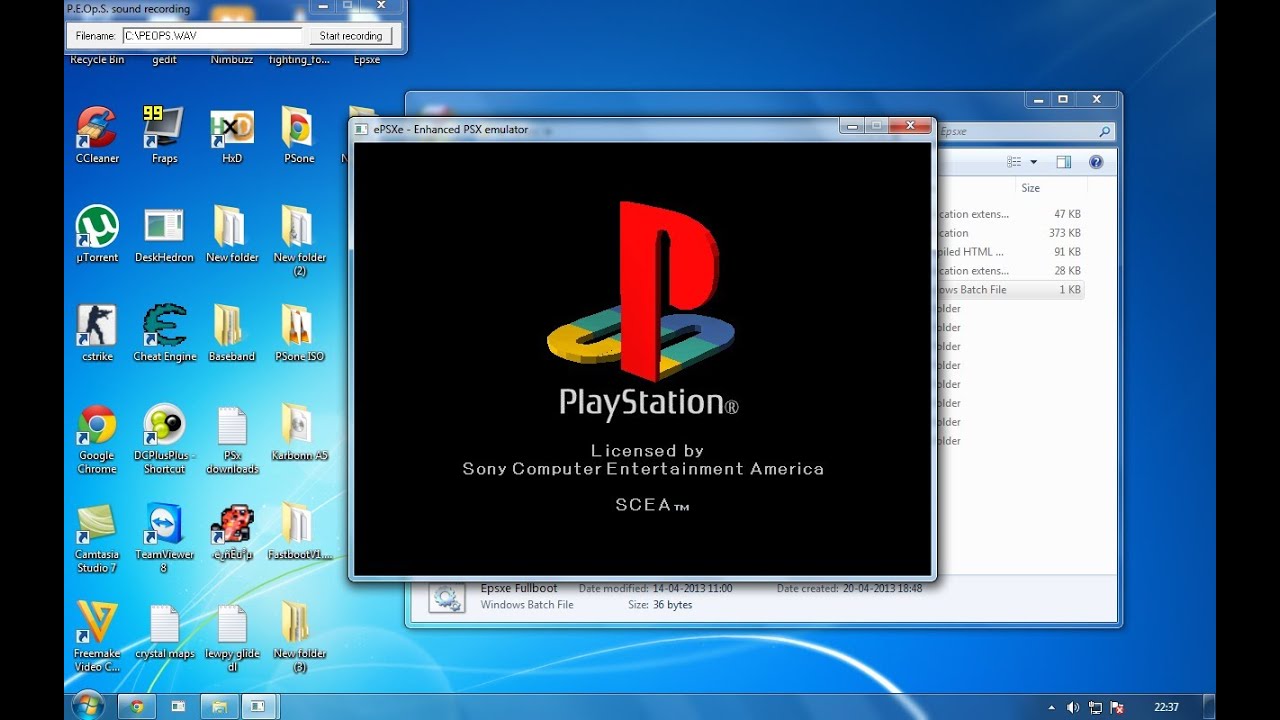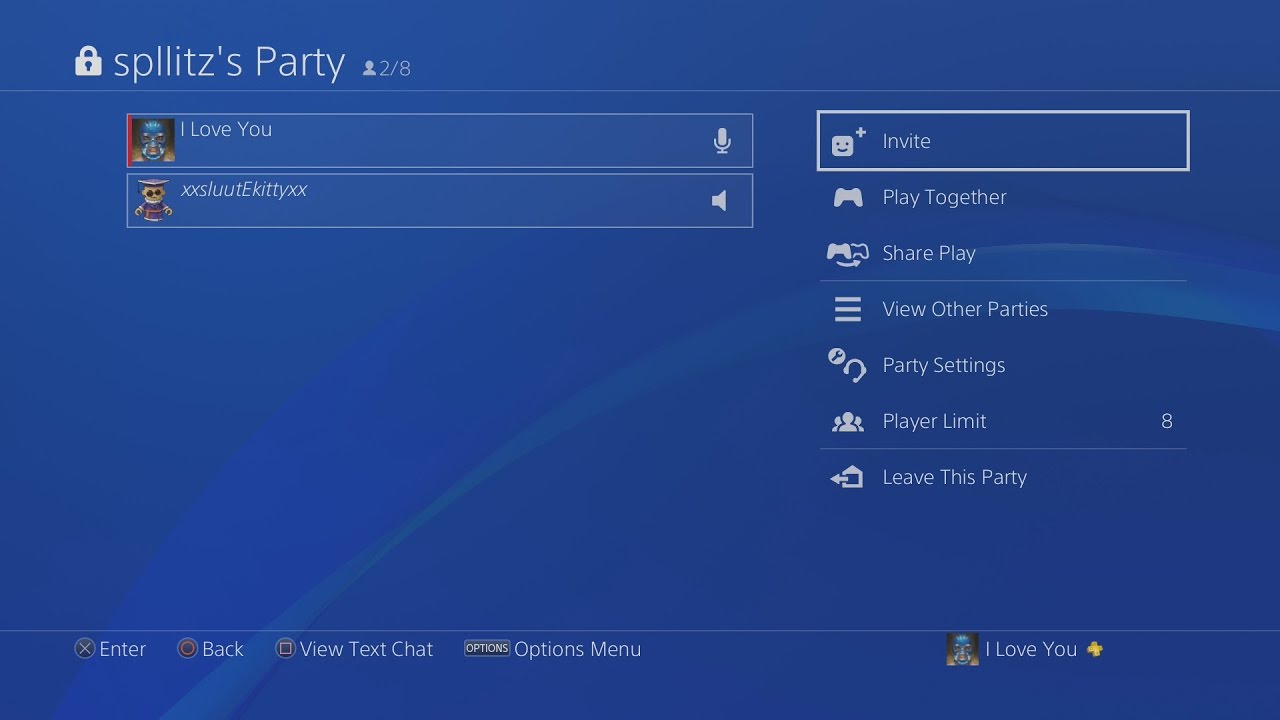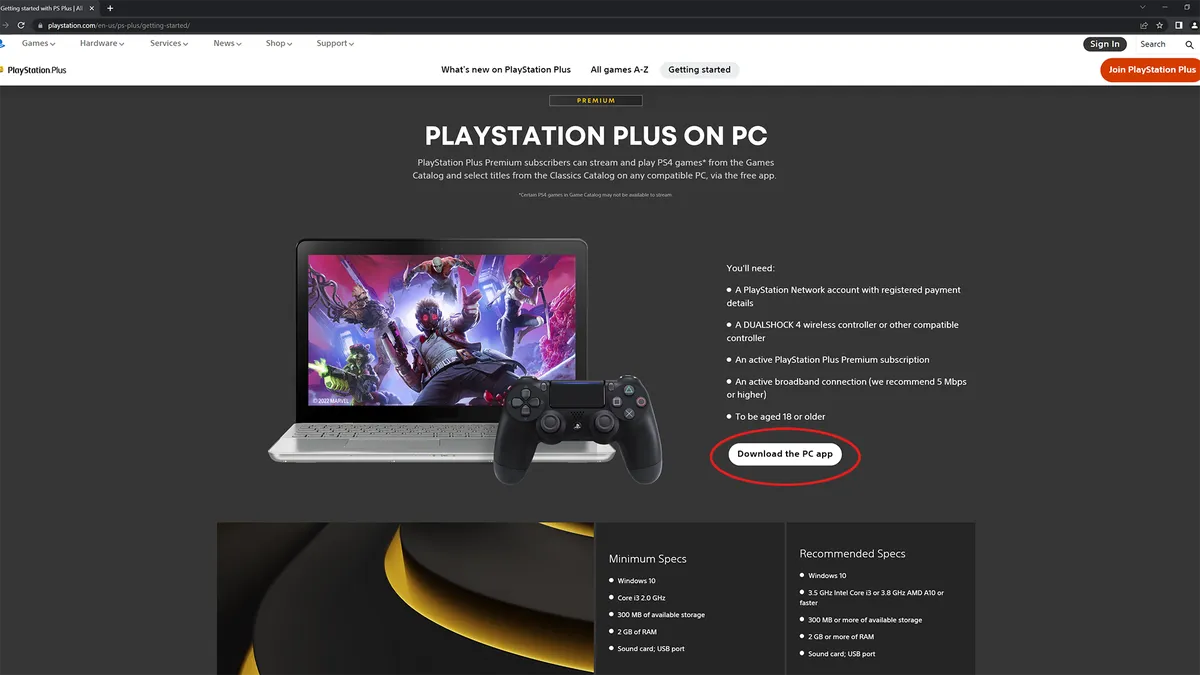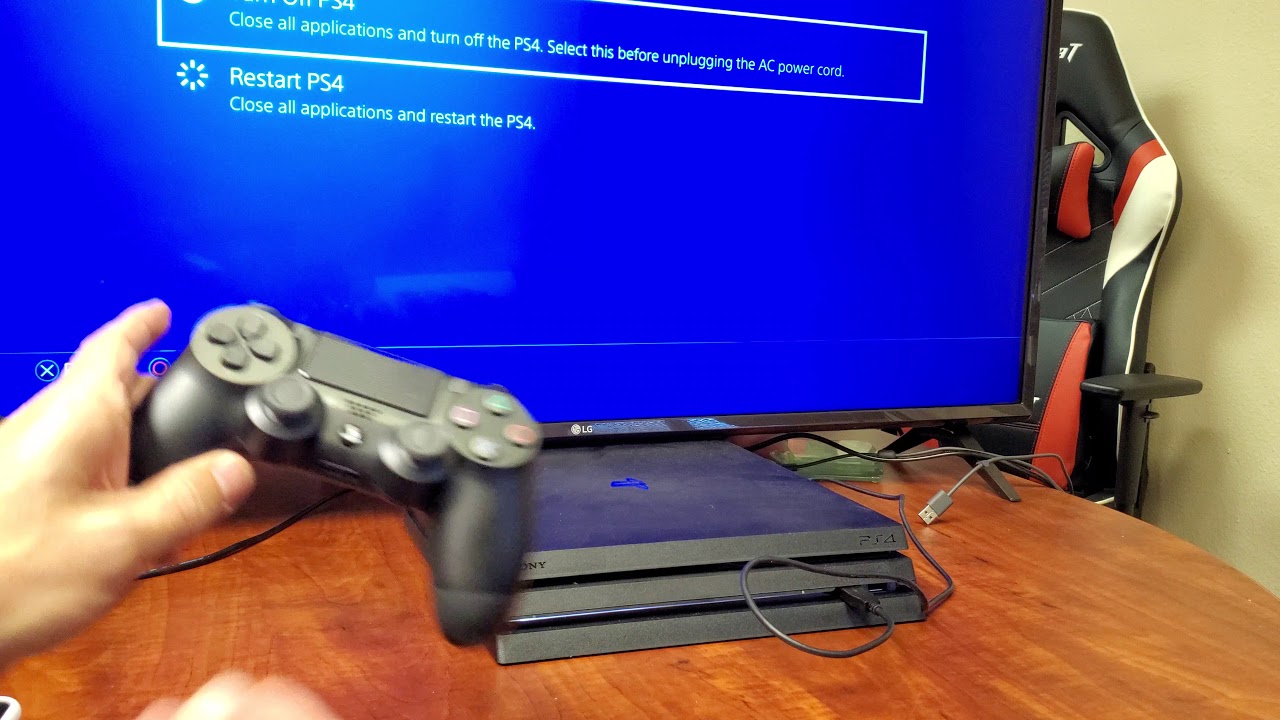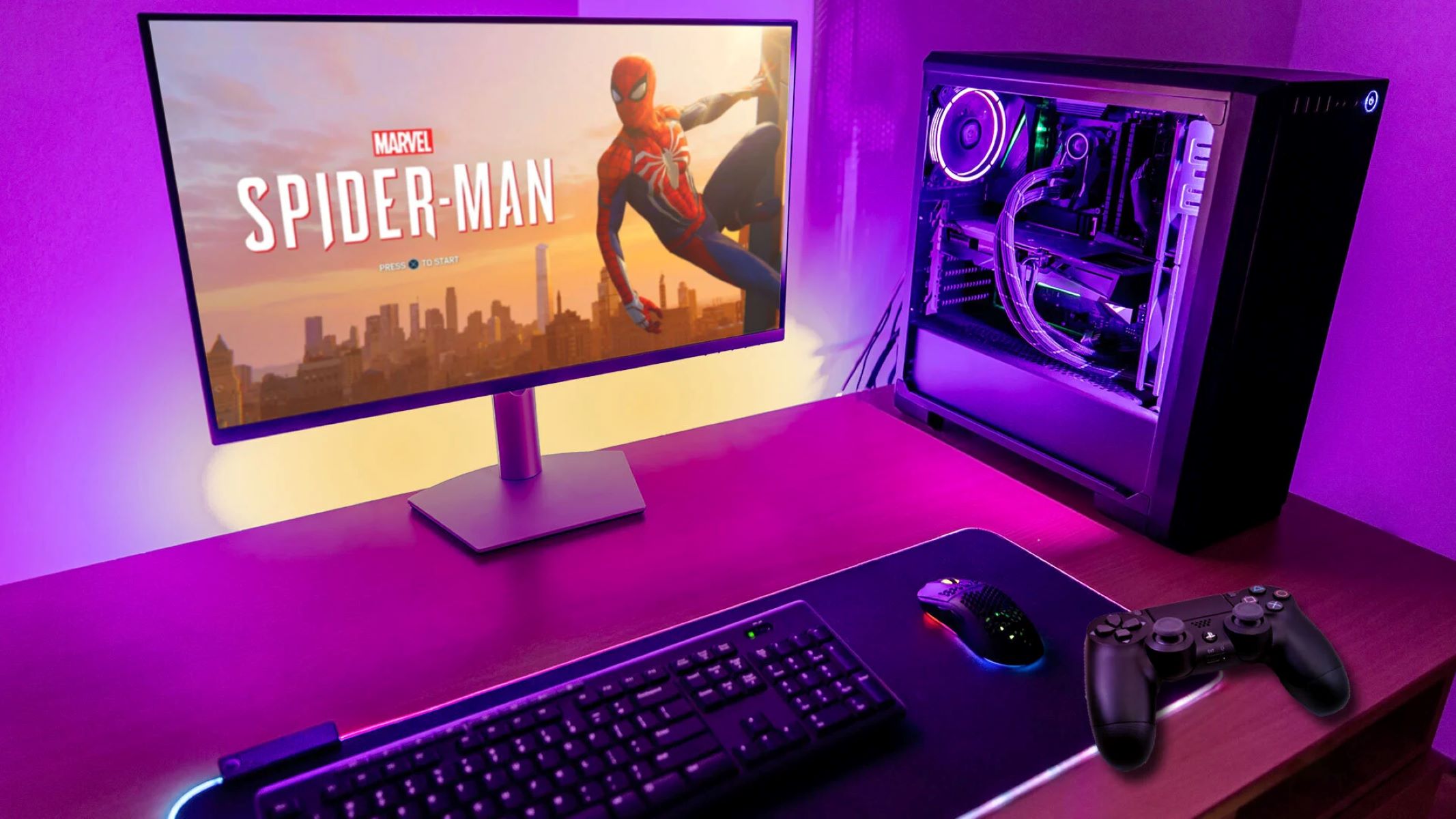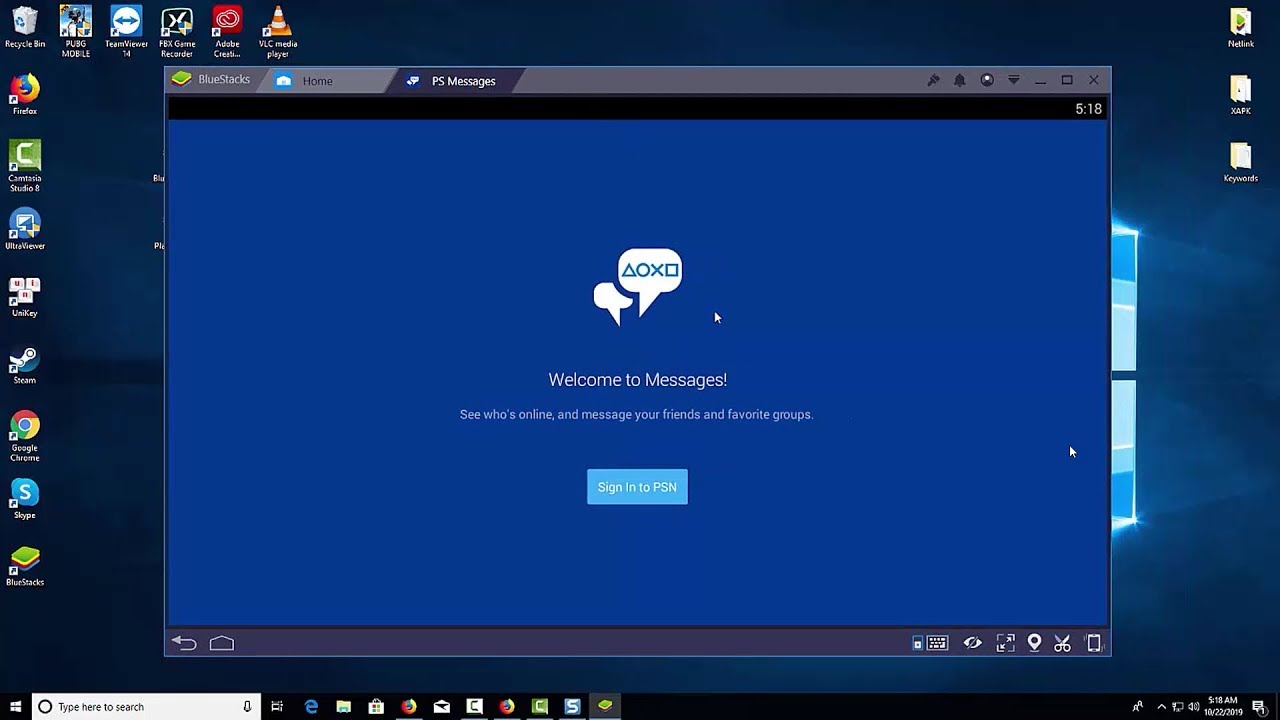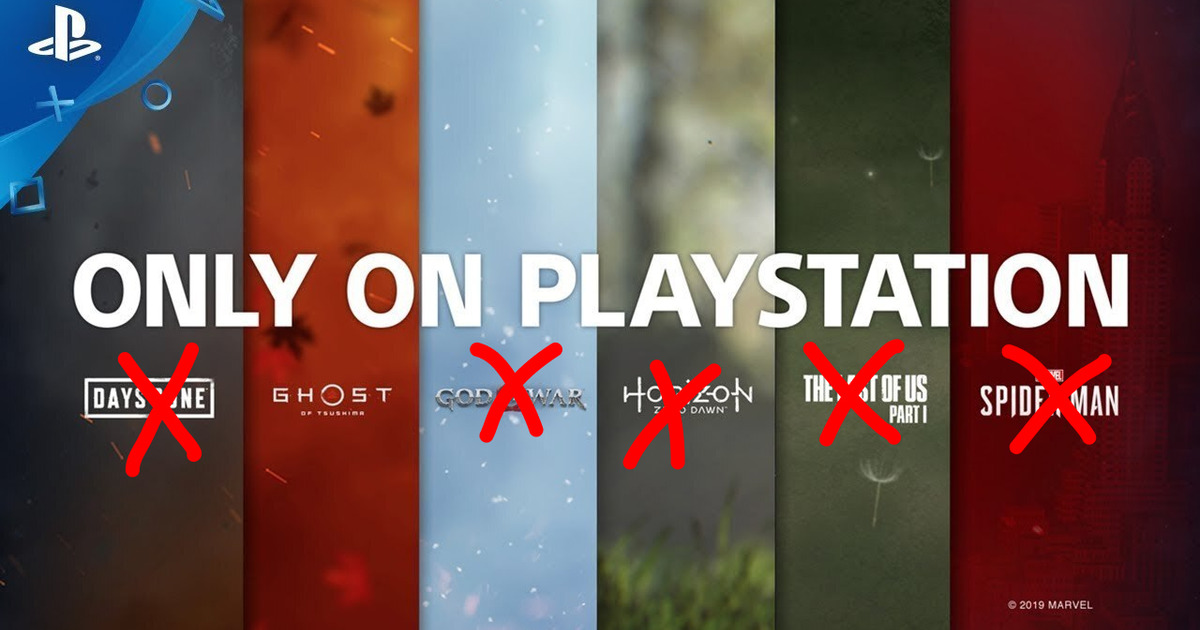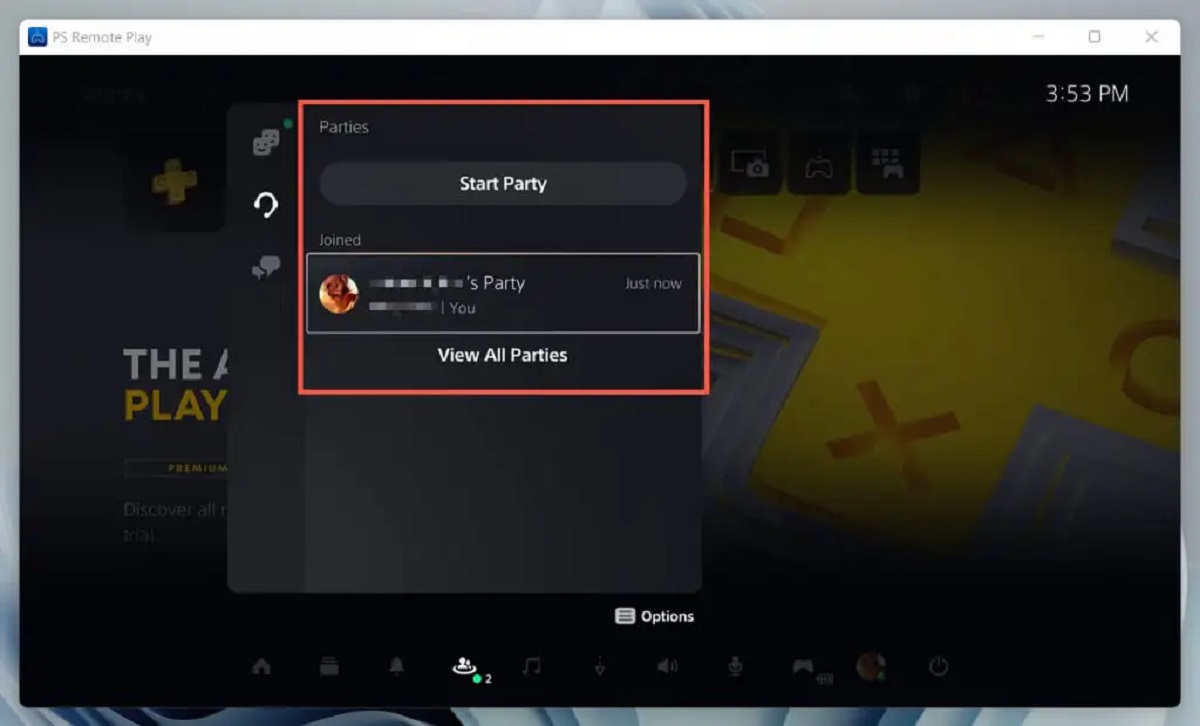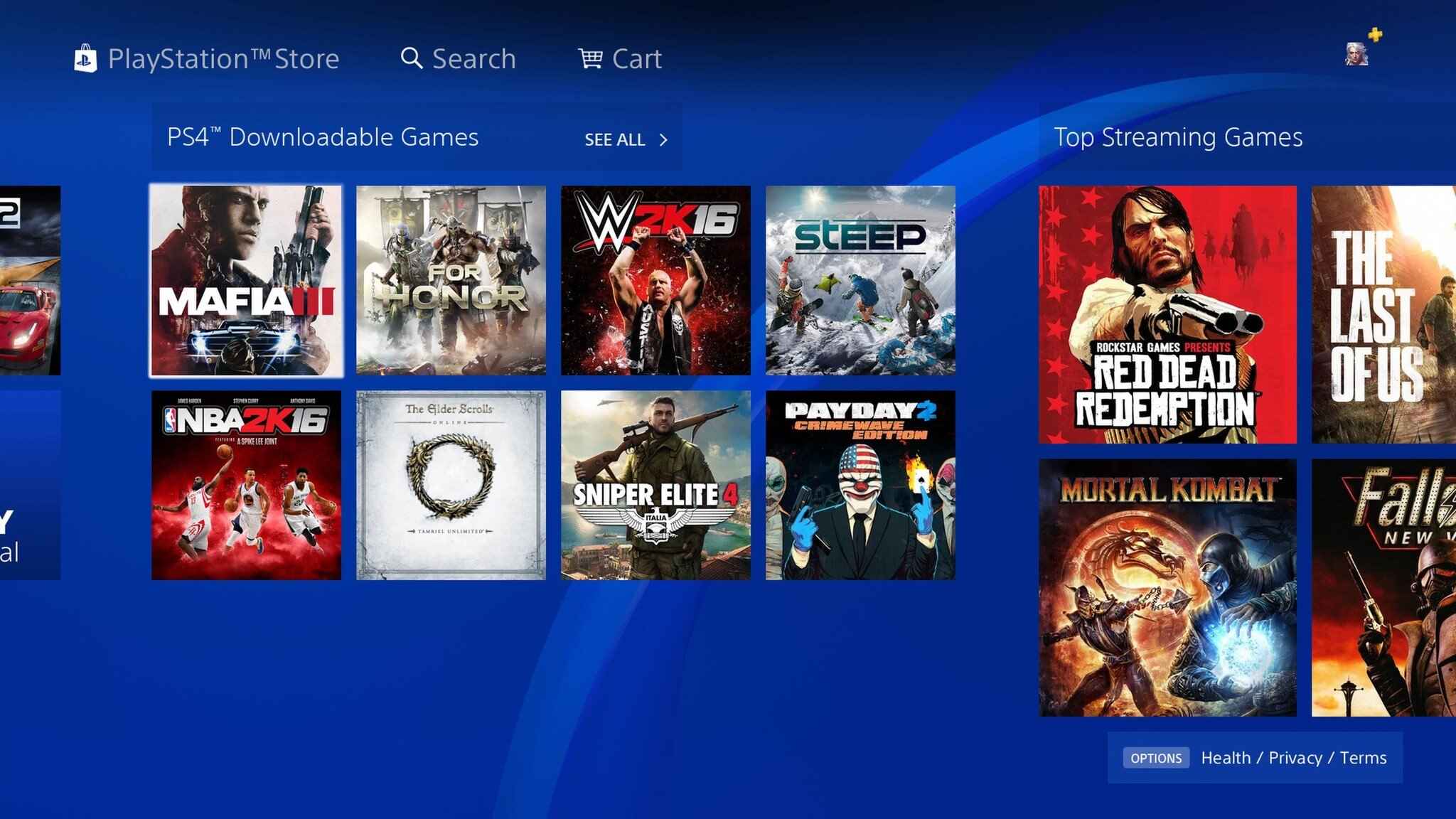Introduction
Are you a gaming enthusiast who loves to play Playstation games? Do you wish you could enjoy those thrilling gaming experiences on your PC? Well, guess what? You’re in luck! In this article, we will explore several methods that will allow you to play Playstation games on your computer, opening up a whole new world of gaming possibilities.
Playing Playstation games on PC offers numerous advantages. It eliminates the need for a dedicated gaming console and allows you to take advantage of your computer’s superior hardware for enhanced visuals and smoother gameplay. Additionally, it provides the convenience of playing your favorite games on a larger screen, with the option to customize controls and settings as per your preference.
Now, you may be wondering how to go about playing Playstation games on your PC. Don’t worry, we’ve got you covered! In the following sections, we will outline different methods that you can use to enjoy your beloved Playstation games on your computer. From using Remote Play and PS Now to utilizing emulators, we will walk you through each step of the process.
Please note that the methods discussed in this article may require certain system requirements and legal considerations, such as owning the original game discs or obtaining ROMs or ISOs from authorized sources. It’s important to respect copyright laws and ensure that you are using these methods for personal use only.
So, if you’re ready to delve into the world of playing Playstation games on your PC, let’s get started! By the end of this article, you’ll have all the knowledge you need to embark on your gaming journey and enjoy the best of both worlds: the immersive gameplay of Playstation and the versatility of your PC.
System Requirements
Before we dive into the different methods of playing Playstation games on your PC, it’s important to ensure that your computer meets the necessary system requirements. While specific requirements may vary depending on the method you choose, here are some general guidelines to consider:
- Operating System: Most methods are compatible with Windows, but some may also work on Mac or Linux.
- Processor: A quad-core processor with a clock speed of at least 2.5 GHz is recommended for smooth performance.
- RAM: A minimum of 8 GB of RAM is recommended for optimal performance.
- Graphics Card: A dedicated graphics card with at least 2 GB of VRAM will ensure better graphics and smoother gameplay.
- Storage: You’ll need sufficient storage space to install the necessary software and store game files. Aim for at least 50 GB of free space.
- Internet Connection: For methods like Remote Play and PS Now, a high-speed internet connection is essential to ensure a lag-free gaming experience.
It’s worth noting that these are general recommendations, and some methods may have specific requirements. For example, certain emulators may require a more powerful processor or a specific version of DirectX. It’s always a good idea to check the system requirements of the specific method you’ll be using to ensure compatibility.
Moreover, keep in mind that the performance of your computer will also depend on factors like the age of your hardware, the presence of any background processes, and the settings of the games being played. Adjusting graphic settings and closing unnecessary applications can help optimize performance and enhance your gaming experience.
Now that you have an idea of the system requirements, you can assess whether your computer meets the necessary specifications or needs any upgrades. Once you have a compatible system, it’s time to explore the methods of playing Playstation games on your PC. Let’s move on to the next section where we will discuss the first method: using Remote Play.
Method 1: Using Remote Play
Remote Play is a fantastic feature provided by Sony that allows you to stream Playstation games from your console to your PC. By utilizing your home network, you can play your favorite games on your computer, regardless of whether your console is in the same room or even in another location. The best part? It’s a free and official method!
To get started, you’ll need to ensure that both your console and PC are connected to the same network. You’ll also need to download and install the official Remote Play software for your PC, which is available for Windows and Mac. Once installed, follow the on-screen instructions to pair your PC with your Playstation console. Make sure your console is in “Rest Mode” or powered on for successful connection.
Once the connection is established, you can access and control your Playstation console through the Remote Play software on your PC. You’ll be able to play games, access the Playstation Store, and even use online multiplayer features, all from the comfort of your computer.
However, it’s important to note that Remote Play has certain limitations. The quality of your gaming experience will depend on the strength of your network connection. For optimal performance, a wired Ethernet connection between your console and router is recommended. Additionally, if you’re playing games that require precise timing and reflexes, such as competitive online multiplayer games, it’s advisable to use a wired controller for minimal input lag.
With Remote Play, you can enjoy the versatility of playing Playstation games on your PC, whether you’re relaxing in another room, traveling, or simply prefer the convenience of using your computer for gaming. It’s a great option for those who already own a Playstation console and want to expand their gaming experience.
Now that you know how to use Remote Play to play Playstation games on your PC, let’s explore another method that doesn’t require a console: using PS Now.
Method 2: Using PS Now
If you don’t own a Playstation console but still want to enjoy a vast library of Playstation games on your PC, then PS Now is the method for you. PS Now is a cloud-based gaming service offered by Sony, allowing you to stream and play a wide variety of Playstation games directly on your PC.
To get started with PS Now, you’ll need a subscription to the service. You can choose between a monthly or annual subscription, giving you access to a vast catalog of games. With PS Now, you don’t need to worry about the storage limitations of your PC, as the games are stored in the cloud and streamed to your computer.
To play Playstation games via PS Now, you need a stable and high-speed internet connection to ensure smooth streaming. Sony recommends a minimum internet speed of 5 Mbps, but for the best experience, a speed of at least 15 Mbps is recommended. Lower speeds may result in latency and interruptions during gameplay.
Once you have a PS Now subscription and a stable internet connection, you can download and install the PS Now application for your PC. After launching the application, you can browse through the vast library of games and select the ones you want to play. The games will be streamed directly to your PC, and you can use your keyboard, mouse, or gamepad to control the gameplay.
With PS Now, you have the flexibility to stream and play Playstation games on your PC without the need for a console. It’s a convenient option for gamers who want access to a wide range of games without having to invest in additional hardware.
It’s important to note that while PS Now provides access to a large selection of games, not all Playstation titles are available on the service. Additionally, the availability of games may vary depending on your location. Make sure to check the PS Now website for the most up-to-date information on the game library and availability in your region.
Now that you know how to use PS Now to enjoy Playstation games on your PC, let’s explore another method that allows you to play Playstation games through emulation.
Method 3: Using Emulators
If you’re a fan of older Playstation games and want to play them on your PC, using emulators is a popular option. Emulators are software programs that mimic the functionality of a specific gaming console, allowing you to run games designed for that console on your computer.
There are different emulators available for Playstation games, each offering varying compatibility and performance. When choosing an emulator, it’s important to consider factors such as the specific Playstation console you’re emulating, the system requirements of the emulator, and the availability of support and updates.
Once you have selected the emulator that suits your needs, the next step is to install it on your PC. Most emulators come with installation wizards that guide you through the process. Follow the instructions provided by the emulator’s developer to ensure a successful installation.
After installing the emulator, you’ll need to configure it to run the Playstation games. This involves selecting the appropriate BIOS files, specifying the game directory, and setting up the graphics, audio, and controller settings. The configuration process may vary depending on the emulator, so it’s essential to consult the emulator’s documentation or online resources for detailed instructions.
Once your emulator is properly configured, you’ll need to obtain the game files, known as ROMs or ISOs, to run on the emulator. It’s important to note that downloading ROMs or ISOs for games you do not own is illegal and violates copyright laws. Ensure that you own the original game discs or obtain the game files from authorized sources before proceeding.
To play the games, simply open the emulator, locate the game file, and load it into the emulator. The game should start running, and you can use your keyboard or a gamepad to control the gameplay, depending on your emulator’s settings.
It’s worth mentioning that while emulators can provide a nostalgic gaming experience, they may not always be perfect. Compatibility issues, glitches, and performance limitations can arise while using emulators. However, with regular updates and advancements in emulator technology, the gaming experience has significantly improved over the years.
Now that you know how to use emulators to play Playstation games on your PC, you can explore the world of classic Playstation gaming right from your computer. Emulators give you the opportunity to relive your favorite childhood memories or discover hidden gems from the Playstation library.
In the next section, we’ll discuss some factors to consider when choosing the right emulator for your gaming needs.
Choosing the Right Emulator
When it comes to choosing an emulator to play Playstation games on your PC, there are several factors to consider. These factors will determine the compatibility, performance, and overall gaming experience provided by the emulator. Here are some key aspects to keep in mind while selecting the right emulator for your needs:
1. Compatibility: Ensure that the emulator you choose supports the specific Playstation console you want to emulate. Some emulators may focus on specific generations, such as PS1 or PS2, while others may offer compatibility with multiple consoles.
2. Stability and Updates: Look for an emulator that receives regular updates and bug fixes. Emulators with active development communities tend to have better compatibility and performance improvements over time.
3. User Interface: A user-friendly and intuitive interface can greatly enhance your gaming experience. Emulators with well-designed interfaces make it easier to set up games, configure settings, and navigate through various options.
4. Performance and Optimization: Emulators differ in terms of performance, with some providing smoother gameplay and better graphics enhancements. Look for emulators that offer options for optimization settings, allowing you to find the right balance between performance and graphical fidelity.
5. Controller Support: Check if the emulator supports your preferred input method. Many emulators offer compatibility with keyboards and gamepads, allowing you to play Playstation games using the control scheme of your choice.
6. Community and Support: A strong online community can provide valuable resources, tutorials, and troubleshooting assistance. Consider emulators that have active forums or communities where you can seek help and connect with other users.
7. Reviews and Recommendations: Read reviews and seek recommendations from fellow gamers or reputable sources. Pay attention to feedback regarding compatibility, performance, and overall user experience to make informed decisions.
Remember that no single emulator is perfect for every game or system configuration. Some games may require specific settings or additional plugins to run properly. It’s important to experiment, tweak settings, and consult online resources to optimize your gaming experience.
By carefully considering these factors, you can select an emulator that suits your gaming preferences and hardware capabilities. Once you have chosen the right emulator, you’ll be ready to dive into the world of Playstation gaming on your PC.
In the next section, we’ll guide you through the process of installing and setting up the chosen emulator on your computer.
Installing the Emulator
Once you have chosen the emulator that suits your needs, it’s time to install it on your PC. Here is a general step-by-step guide to help you through the installation process:
Step 1: Download the Emulator: Visit the official website of the emulator you have chosen and download the installation file. Make sure to download it from a reputable source to ensure the safety of your computer.
Step 2: Run the Installation File: Locate the downloaded file on your computer and double-click on it to run the installation wizard. Follow the on-screen instructions to begin the installation process.
Step 3: Choose the Installation Location: During the installation process, you may be prompted to select the installation location. Choose a location on your computer where you want the emulator to be installed. The default location is usually fine, but you can choose a different directory if you prefer.
Step 4: Complete the Installation: Follow the prompts provided by the installation wizard to complete the installation process. Once the installation is complete, you may be asked to launch the emulator or create a desktop shortcut for easy access.
Step 5: Check for Updates: After installing the emulator, it’s recommended to check for any available updates. Many emulators have regular updates that improve performance, add features, and fix bugs. Updating your emulator ensures that you have the latest version and the best gaming experience.
It’s important to note that the installation process may vary slightly depending on the specific emulator you choose. Some emulators may require additional configuration steps during installation, such as selecting BIOS files or configuring controller settings. Consult the documentation or online resources provided by the emulator’s developer for detailed instructions specific to your chosen emulator.
Once you have successfully installed the emulator, you’re one step closer to playing Playstation games on your PC. In the next section, we will guide you through the process of configuring the emulator to ensure optimal performance and gameplay experience.
Configuring the Emulator
After installing the emulator on your PC, the next step is to configure it to ensure optimal performance and a smooth gaming experience. Here are the key configurations you may need to consider for your chosen emulator:
1. BIOS Files: Some emulators require BIOS files to run Playstation games. These files contain essential information for the emulator to function properly. Check the emulator’s documentation or website to find out which BIOS files are needed and where to place them in the emulator’s directory.
2. Graphics Settings: Adjusting the graphics settings can significantly impact the visual quality and performance of the games. Experiment with options such as resolution, anti-aliasing, and texture filtering to find a balance between visual fidelity and performance on your PC.
3. Controller Configuration: If you’re using a gamepad or controller to play games, ensure that the emulator recognizes and is correctly configured for your input device. Most emulators provide options to map the buttons and analog sticks to match your controller’s layout.
4. Audio Settings: Configure the audio settings to ensure optimal sound quality during gameplay. Emulators typically provide options for sample rate, audio latency, and audio synchronization.
5. Compatibility Settings: Some games may require specific settings or patches to run correctly. Emulators often have compatibility options or plugins that can help resolve issues or enhance compatibility with certain games.
6. Save States and Memory Cards: Emulators often allow you to save and load game states, which can be a convenient feature for quick saving and loading. Additionally, configure memory card options to ensure that your in-game progress is saved properly.
Remember, each emulator may have a different interface and set of configuration options. It’s important to consult the emulator’s documentation or online resources specific to your chosen emulator to get detailed instructions on how to configure it properly.
Take the time to explore and experiment with various settings to find what works best for you and the games you want to play. Emulator configurations can be highly customizable, allowing you to tailor your gaming experience to your liking.
With the emulator properly configured, you’re ready to start playing Playstation games on your PC. In the next section, we will discuss how to obtain the game files, commonly known as ROMs or ISOs, for use with the emulator.
Downloading ROMs or ISOs
In order to play Playstation games on your PC using an emulator, you will need to obtain the game files, commonly referred to as ROMs or ISOs. These files contain the game data and are necessary for the emulator to run the games. It is important to note that downloading ROMs or ISOs for games you do not own is illegal and violates copyright laws. Therefore, it is essential to only acquire game files from authorized sources or if you own the original game.
There are reputable websites and communities that offer legal alternatives for obtaining ROMs or ISOs. These sources provide access to game files that are in the public domain, have been released as freeware, or have become abandoned by the original publishers. Moreover, some websites allow users to legally purchase and download digital versions of classic Playstation games.
When obtaining ROMs or ISOs, ensure that you are getting them from a reliable and trusted source. Beware of websites that claim to offer free downloads for copyrighted games, as these are often illegal and may pose security risks. Always exercise caution and use reputable platforms that adhere to copyright laws and provide verified game files.
Once you have acquired the necessary game files, you will need to store them in a designated directory on your computer. Many emulators have specific folders or directories where you can place your ROMs or ISOs. The emulator’s documentation or online resources will provide information on where to store the game files and how to access them from within the emulator.
It is crucial to respect the copyright of game publishers and developers. Only download and play games for which you have legal permission, whether it is through owning the original game or acquiring the game files from authorized sources. This ensures that you are using emulators and game files responsibly and within the bounds of the law.
With the ROMs or ISOs properly obtained and stored, you are now ready to enjoy your favorite Playstation games on your PC. In the next section, we will discuss how to connect a controller to enhance your gaming experience.
Connecting a Controller
Playing Playstation games on your PC can be even more immersive and enjoyable when you connect a controller. The good news is that most emulators support various types of controllers, allowing you to use your preferred input device for a more authentic gaming experience.
1. Wired Controllers: If you have a wired controller, you can simply connect it to your PC using a USB cable. Most modern controllers are automatically recognized by the operating system, requiring no additional setup. Once connected, you can start using the controller to play games on the emulator.
2. Wireless Controllers: Wireless controllers require a separate wireless adapter or Bluetooth connectivity to establish a connection with your PC. Consult the manual or the manufacturer’s website for instructions on how to connect your specific wireless controller. Once connected, your PC should recognize the controller, allowing you to use it with the emulator.
3. Emulated Controllers: Emulators often provide the option to map keyboard or mouse inputs to emulate a controller. While this method can be useful if you don’t have a physical controller, it may not provide the same level of comfort and precision as using an actual controller.
It’s important to note that some emulators may require you to configure the controller settings within the emulator itself. This involves assigning specific buttons or mapping the controller’s analog sticks to match the layout of a Playstation controller. You can usually find these configuration options in the emulator’s settings or input menu.
Once your controller is connected and configured, you can start using it to play Playstation games on your PC. The emulator should recognize the inputs from your controller, allowing you to enjoy the games as if you were playing them on an actual Playstation console.
It’s worth mentioning that you may need to adjust controller settings based on the game you’re playing. Some games have specific control configurations or may require additional tweaking to ensure smooth gameplay. Consult the game’s documentation or online resources for information on optimizing the controls for a specific game.
With your controller connected, you’re all set to dive into the world of Playstation gaming on your PC. In the next section, we will provide some troubleshooting tips to help you overcome common issues and enhance your gaming experience.
Troubleshooting Tips
While playing Playstation games on your PC can be a rewarding experience, you may encounter some common issues along the way. Here are some troubleshooting tips to help you address potential problems and ensure a smooth gaming experience:
1. Performance Issues: If you’re experiencing lag or stuttering during gameplay, try adjusting the graphics settings in your emulator. Lowering the resolution, disabling certain graphical enhancements, or reducing the number of background processes on your PC can help improve performance.
2. Controller Not Working: If your controller is not recognized by the emulator or does not respond correctly, double-check the controller configuration within the emulator’s settings menu. Ensure that the controller is properly connected and configured, and consider testing it on other games or platforms to ensure it is in working condition.
3. Game Compatibility: Not all Playstation games are guaranteed to work perfectly on emulators, as compatibility can vary depending on the emulator and the game itself. Check online forums or communities dedicated to the emulator you’re using to see if there are any specific patches or workarounds for the game you’re having issues with.
4. Audio or Visual Glitches: If you’re experiencing glitches or distorted graphics/audio, try changing the emulator’s settings related to graphics and sound. Adjusting specific options like frame skip, audio sync, or graphical filtering can often resolve these issues.
5. Save Game Corruption: To avoid losing your progress, make regular backup copies of your saved game files. Emulators usually have options to create multiple save states or use virtual memory cards. Utilize these features to have multiple saved copies of your progress in case of corruption or accidental deletion.
6. Emulator Updates: Keep your emulator up to date by regularly checking for new versions or patches. Developers often release updates that improve compatibility, fix bugs, and enhance performance. Staying up to date ensures that you benefit from the latest improvements and fixes.
7. Documentation and Online Resources: Consult the documentation, tutorials, or online forums specific to your emulator for additional troubleshooting tips and guidance. Emulator communities often share valuable knowledge and insights that can help resolve specific issues you may encounter while using the emulator.
By following these troubleshooting tips and seeking support from the emulator’s community, you can overcome common challenges and enjoy a smooth and enjoyable Playstation gaming experience on your PC.
In the next section, we will wrap up the article and summarize the key points discussed throughout the guide.
Conclusion
Congratulations! You’ve now learned several methods to play Playstation games on your PC. Whether you choose to use Remote Play, PS Now, or emulators, each method provides a unique way to enjoy the thrilling world of Playstation gaming on your computer.
Remember to ensure that your PC meets the necessary system requirements for optimal performance. Follow the installation and configuration steps specific to the method and emulator you choose, and make sure to obtain game files from authorized sources or if you own the original game.
By connecting a controller, you can enhance your gaming experience and immerse yourself fully in the world of Playstation gaming. Troubleshooting tips can help you overcome common issues that may arise during gameplay, ensuring a smooth and enjoyable experience.
It’s crucial to always respect copyright laws and use emulators and game files responsibly. Only download and play games that you have legal permission to do so, whether you own the original game or obtain the game files from authorized sources.
Now, armed with the knowledge provided in this guide, you can embark on your gaming journey and enjoy a vast library of Playstation games on your PC. Take a trip down memory lane with classic titles or explore new ones. Embrace the convenience, flexibility, and enhanced gaming experiences that playing Playstation games on your PC brings.
So, what are you waiting for? Start your engines, gear up, and get ready for an incredible gaming adventure right on your PC. Happy gaming!







